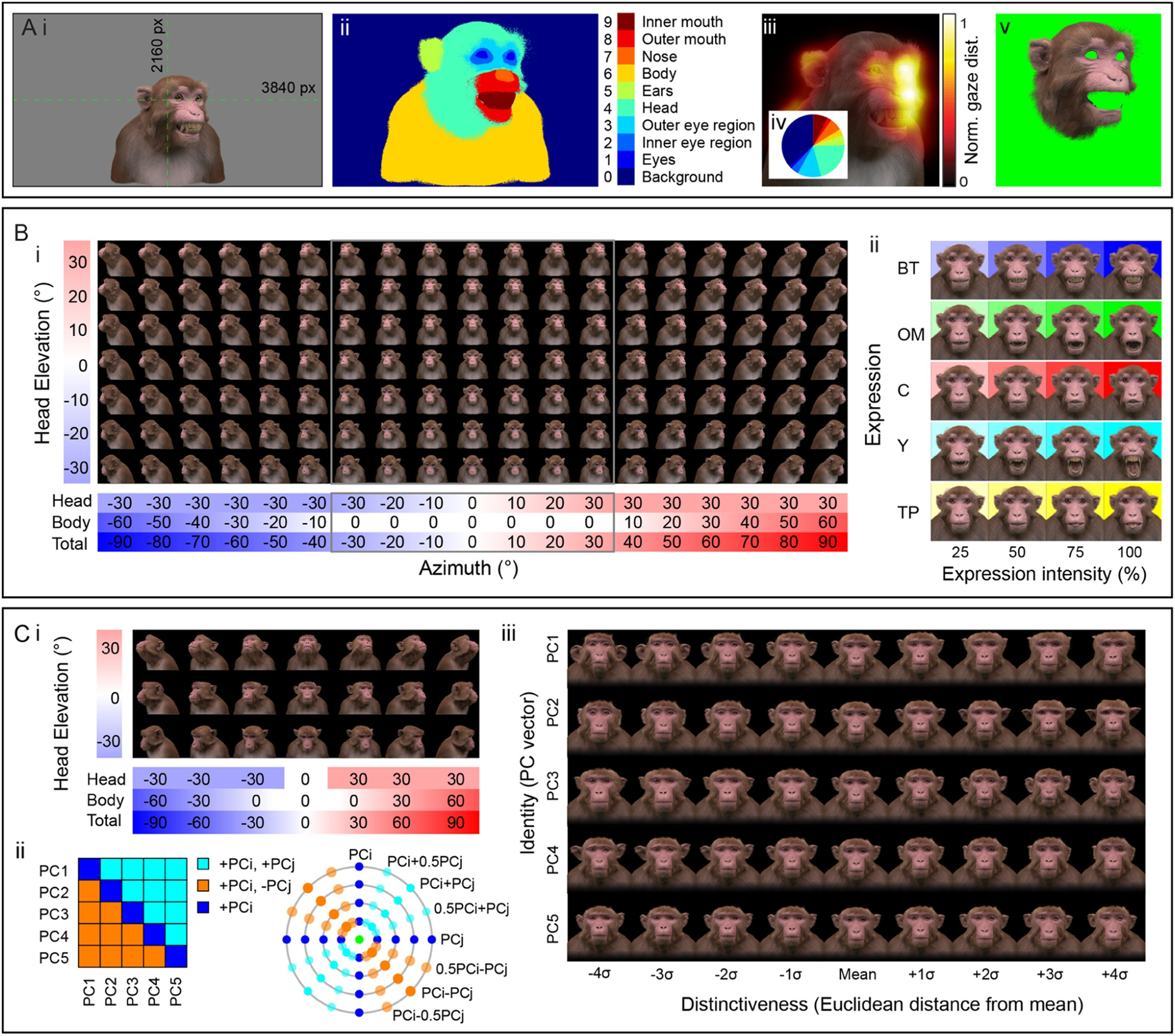Figure 6.

Summary of the publicly released MF3D stimulus set, release 1. A. Stimulus set format and applications. i. Each colour image in the set is rendered as a 3840 × 2160 pixel RGBA image in .png format with 32-bits per pixel. The avatar is positioned such that the center of the screen coincides with the cyclopean eye when the avatar is directly facing the camera. ii. For each colour image, we provide a corresponding label map image (.hdr format) of the same dimensions, where integer pixel values indicate which anatomical structure of the avatar they belong to. iii. An example of a simulated gaze distribution map for the stimulus shown in i. iv. Proportion of fixations on each labelled structure can be easily computed. v. Novel stimuli can be created by using the label map to mask specific parts of the original image. B. Expression stimuli. i. All head orientations rendered for each expression condition (neutral expression shown for illustration): 19 azimuth angles (−90 to +90° in 10° increments) × 7 elevation angles (−30 to +30° in 10° increments) for 133 unique head orientations. ii. Five facial expressions (rows) rendered at four levels of intensity (columns), at each of the head orientations illustrated in F, for a total of 2,793 unique colour images. C. Identity stimuli. i. All head orientations rendered for each identity condition (average identity shown for illustration): 7 azimuth angles × 3 elevation angles for 21 head orientations. ii. Identity trajectories through face space were selected through all pairwise combinations of the first 5 principal components from the PCA (which cumulatively account for 75% of the sample variance in facial morphology), at 3 polar angles for a total of 65 unique trajectories. iii. Identities were rendered at eight levels of distinctiveness (±4σ from the sample mean in 0.5σ increments) along each identity trajectory (shown here for the first 5 PCs), plus the sample mean for a total of 10,941 unique colour images.
